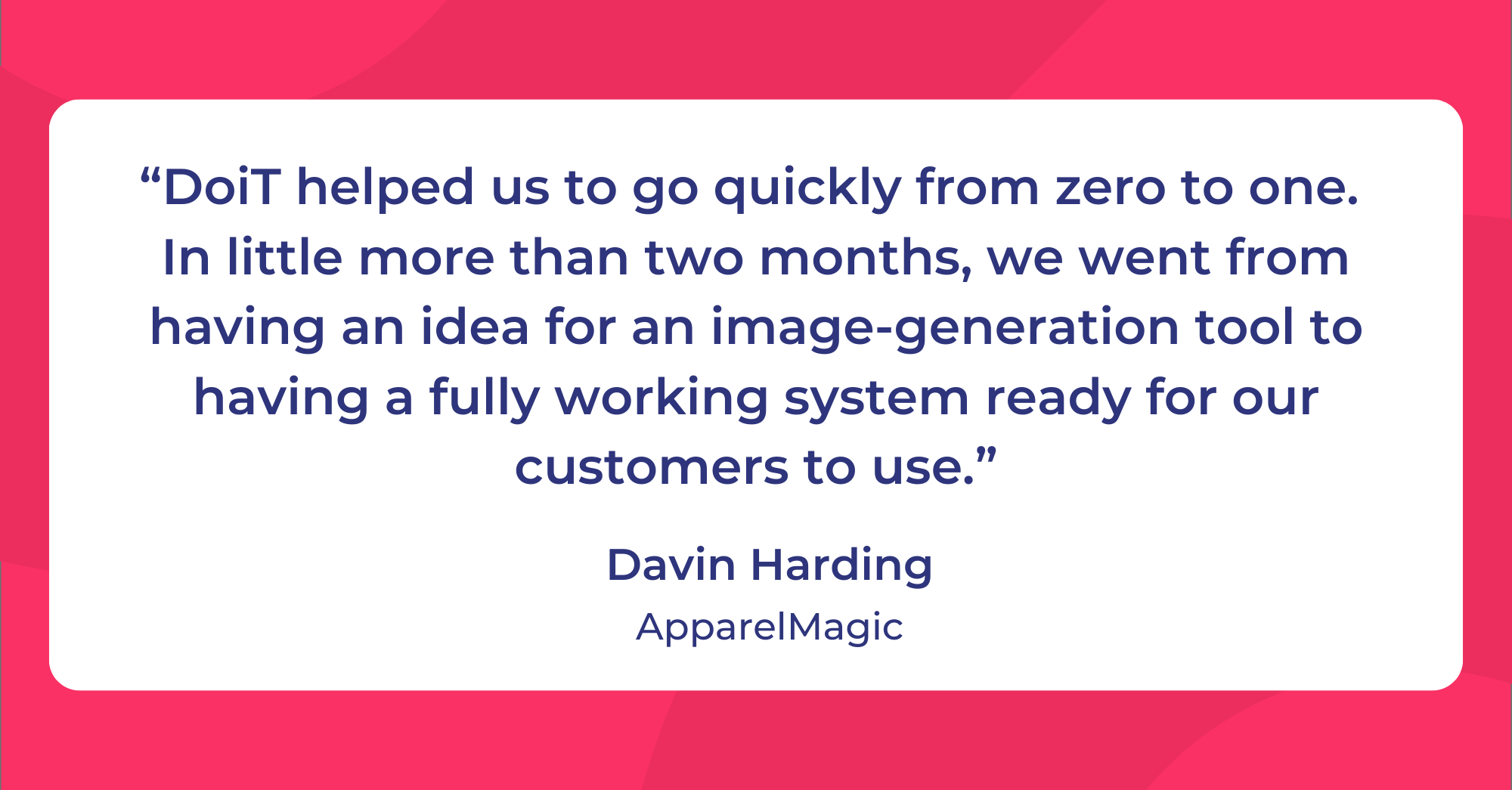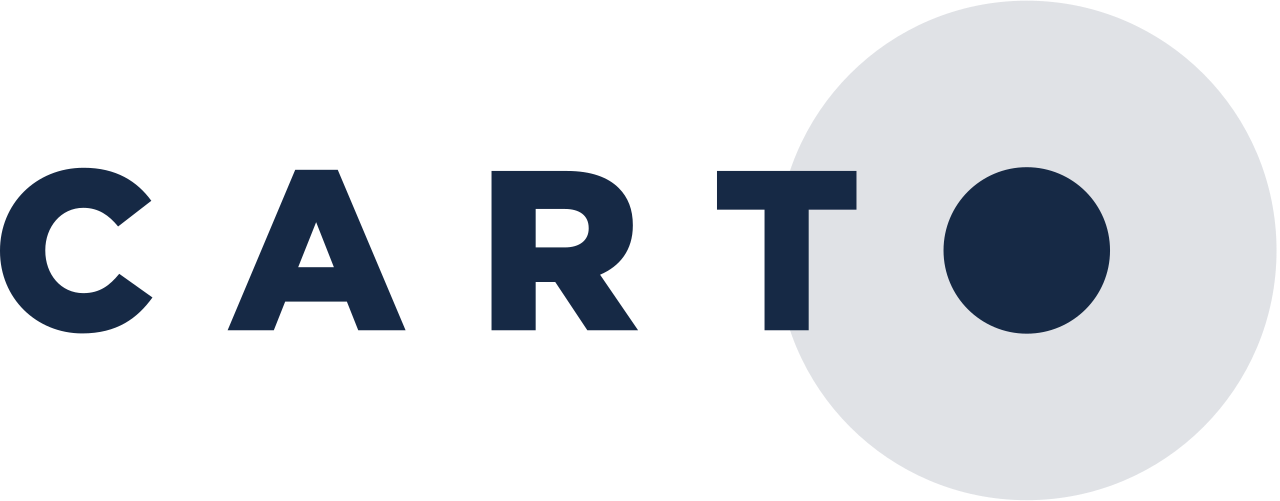
How Rapyd solved observability gaps to cut Kubernetes costs by 40%
Learn how Rapyd overcame observability limits with PerfectScale by DoiT to cut Kubernetes costs and boost app stability.
View all DoiT Cloud Intelligence features
Insights, tips and perspectives from cloud experts
Foundational expertise and future-ready recommendations
In-person and virtual tech talks
Meet the team leading DoiT
Hear what’s new at DoiT
Unlock revenue through expert partnerships
Discover career opportunities
Award-winning partners of cloud providers

ApparelMagic is an enterprise resource planning (ERP) system built for fashion brands. Its robust platform powers clothing companies with a cloud-based suite of tools to streamline operations and foster growth. From design to delivery, ApparelMagic is the choice for industry leaders who desire innovation, quality, and scalability.
From warehouse inventory to product lifecycle management and enterprise resource planning, ApparelMagic’s one-stop platform provides everything clothing companies need to grow their business. Key to the company’s offering are its powerful automations and AI features, which simplify processes and increase efficiency, allowing customers to focus on the work that really matters.
As part of its mission to fuel customers’ growth, ApparelMagic wanted to develop an image-generation tool to allow companies to automatically create clothing design images. Recognizing the value of rapid prototyping for fashion brands, ApparelMagic set out to integrate this functionality within its PLM module. To ensure efficient development while maintaining its focus on core ERP and PLM innovations, the company explored collaboration opportunities with experts in this space.
“Spending two months developing this image-generation tool in-house would have diverted us from enhancing our other agentic offering, which was our highest priority,” explains Davin Harding, Senior Software Engineer at ApparelMagic. “DoiT gave us a way to develop the tool while remaining focused on other AI agents.”
Building a foundation for collaboration with generative AI training
Following an introduction from its cloud provider, Amazon Web Services (AWS), ApparelMagic and DoiT began working together to develop the image-generation tool. ApparelMagic explained its needs during an initial discovery call, including its preference to build the tool as a decoupled microservice to allow it to get it up and running as quickly as possible. DoiT’s expert cloud architects then ran a series of generative AI workshops and training sessions with the ApparelMagic team to give them a clear understanding of the technology that would be used to build the tool.
“The image-generation tests gave us a feel for how the image models would work, including the pros and cons of each,” Harding explains. “DoiT’s expertise helped us to understand which AWS modules to choose and how they would work together effectively, which saved us a significant amount of development effort.”
Architecting a reliable image-generation tool with DoiT cloud engineers
After drawing up an architectural plan, DoiT’s cloud engineers set about building the image-generation tool. They chose to use AWS Lambda’s serverless architecture to ensure it would automatically scale its resource usage to handle any spikes in activity while helping ApparelMagic manage costs.
Anticipating the security challenge of having an open-input text box for customers to enter their clothing-design descriptions, DoiT also recommended pre-processing all user prompts to automatically disqualify any unsafe or inappropriate requests. Not only did this help to secure the tool, it meant ApparelMagic could ensure it was only being used as intended, and the company wasn’t using resources to generate images unrelated to clothing design.
To ensure the tool’s reliability, DoiT chose to divide the workflow into three separate queues, one for each image style (product sketch, product image, product image on a model), with each queue linked to a dedicated AWS Lambda function. This means that as usage scales up, requests won’t be competing for resources in a single queue, reducing the risk of delays and bottlenecks. It also makes the product easier to maintain.
“DoiT’s suggestion to separate the queues makes a lot of sense. It keeps the flow simple for each image type, making it easy for developers to maintain each one in the future, without having to navigate a complex system. Maintainability, scalability, and developer experience were all key benefits.”
Giving developers a clear view under the hood with comprehensive observability
DoiT further enhanced the maintainability of the tool with robust monitoring capabilities throughout the pipeline to make it easy to identify and resolve any performance issues. Using separate queues for each image type helped to simplify monitoring within the AWS console, giving ApparelMagic clear visibility of incoming, successful, and failed requests. DoiT cloud engineers also configured alarms to trigger in the event of queue failures.
For observability, DoiT integrated AWS CloudWatch. Should there be a failure, such as those detected by queue alarms, CloudWatch enables the ApparelMagic team to quickly diagnose and fix any errors. DoiT also used dead-letter queues to capture any problematic requests, allowing for detailed error monitoring and facilitating the reprocessing of failed tasks, ensuring no requests were lost.
A smooth handover and a faster path to clothing design
With the image-generation tool built, DoiT delivered the infrastructure as code for ApparelMagic to deploy in its platform. DoiT’s cloud engineers worked closely with the ApparelMagic team to ensure a smooth handover, walking them through the full architecture and working together to test the tool and resolve any bugs.
“The DoiT engineers were very responsive during the handover,” recalls Harding. “They gave us good documentation explaining everything we needed to consider going forward, as well as handling all our requests and making the refinements we needed. We really appreciated how thorough they were.”
With the handover complete, ApparelMagic then worked on the front end and billing system in preparation for release. The image-generation tool is now being rolled out to ApparelMagic’s customers, allowing them to use natural language prompts to instantly create three distinct images of their clothing designs: a sketch for designers, a photograph for manufacturers, and a photograph of the clothes on a model for display purposes. This will save clothing companies weeks of work ideating and designing products.
The images will also be stored in ApparelMagic’s platform, allowing customers’ teams to collaborate on them easily in one place, instead of having to send designs back and forth via email.
Two months of development work saved
DoiT’s cloud engineers built and delivered the image-generation tool in just over two months, saving ApparelMagic’s development team two months of development time, allowing them to remain focused on other priorities.
99.9% faster product designs
ApparelMagic’s customers can now come up with images of clothing designs in seconds. This process previously involved weeks of ideation, collaboration and design, equating to a time-efficiency saving of more than 99.9%.
As ApparelMagic rolls out its image-generation tool, it will gather customer feedback to help it understand exactly what customers want so it can refine the product accordingly. “DoiT has helped us to develop a fully working image-generation tool that our customers can use to streamline their operations,” says Harding. “Thanks to the smooth handover, we can now get on with refining the tool and tailoring it to our customers’ needs.”

Learn how Rapyd overcame observability limits with PerfectScale by DoiT to cut Kubernetes costs and boost app stability.

Facing challenges in listing its VPN solution on AWS Marketplace, OpenVPN turned to DoiT. With expert guidance and strategic support, OpenVPN streamlined the process, optimized licensing, and accelerated its go-to-market success.

Carto leveraged DoiT Cloud Intelligence™ to optimize cloud costs and infrastructure efficiency, achieving continuous savings while maintaining security and performance. DoiT’s AI-driven platform powered by expert validation made them the perfect partner.
From cost optimization to cloud migration, machine learning and CloudOps,
we’re here to make the public cloud easy.
From cost optimization to cloud migration, machine learning and CloudOps, we’re here to make the public cloud easy.
Ready to get started?
You will receive a calendar invite to the email address provided below for a 15-minute call with one of our team members to discuss your needs.